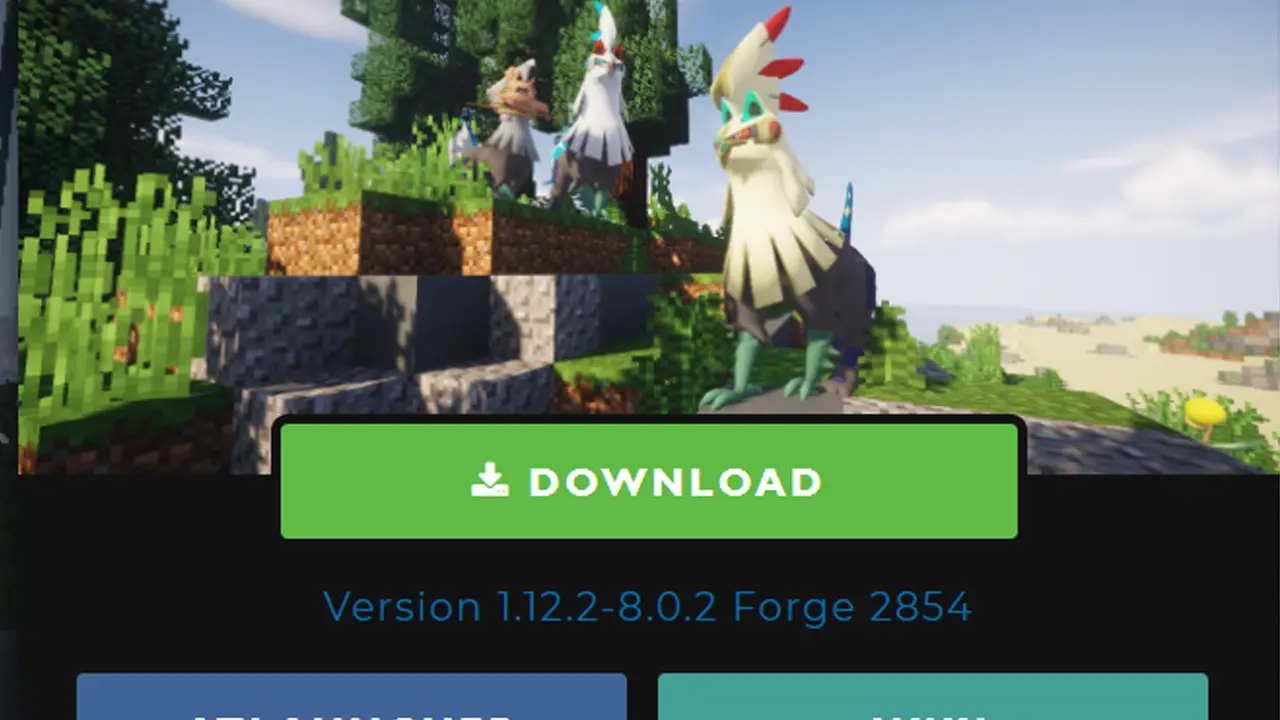If you are a fan of Minecraft and Pokémon, it is time to get the Pixelmon add-on for Minecraft. Pixelmon is a fun way to add Pokémon to Minecraft. Once done, it allows you to catch, train, and battle with other Pokémon inside Minecraft. There are many new things to do in Pixelmon, like using Poké Balls, visiting Pokémon gyms, and finding wild Pokémon. Although it might seem a little tricky at first, with the help of our list of all Minecraft Pixelmon Commands, you can make your experience much more accessible. We will share the list of all Pixelmon commands to help you become an expert Pixelmon trainer.
All Pixelmon Commands for Minecraft

Here is the table of all the Pixelmon Commands for Minecraft:
| Pixelmon Commands | Description |
|---|---|
| /npckill <world> <trainer> | This command eliminates all Non-Player Character (NPC) Trainers from the game. |
| /spawning [on] | This command turns on Pokémon spawning everywhere in the game world. |
| /npckill <world> <all> | This command removes every Non-Player Character (NPC) in the game world. |
| /compedit <player> <box> <slot> <Pokémon Spec> | This “Edit Pokémon” command lets you change a Pokémon in a player’s PC. |
| /completeallquests <player> | The specified player’s active quests are marked as completed upon executing this command. |
| /spawning [off] | The “Spawning Disable” command stops wild Pokémon from appearing all over the game world. |
| /wiki <Pokémon> <daycare> | This command details the Pokémon’s daycare attributes, including its Egg groups, necessary steps, and Breeding Requirements. |
| /wiki <Pokémon> <moves> | This command shows the moves a Pokémon learns as it grows and levels up in the game. |
| /disablebattle <player> | This command prevents chosen players from competing against others, effectively turning off player-versus-player combat for those selected. |
| /npckill <world> <doctor> | This command removes all the Non-Player Characters (NPCs) in the game that let you trade Pokémon with them. |
| /npckill <world> <chatting> | This command removes all the Non-Player Characters (NPCs) you can talk to, called “Chatting NPCs,” from the game. |
| /npckill <world> <trader> | This command removes all the Non-Player Characters (NPCs) from the game that allow you to trade Pokémon with them. |
| /pokeheal [player] | This “Heal” command heals a player’s hurt Pokémon. If you don’t say which player, it heals your own Pokémon. |
| /comptest <player> <box> <position> <Pokémon Spec> | This command verifies if the Pokémon in the specified position of the chosen player’s PC matches the provided Pokémon specifications. |
| /tcg endbattle | This command instantly terminates the ongoing Trading Card Game (TCG) battle for the specified player if they are engaged in one. |
| /npckill <world> <relearner> | This command removes all the special characters called Move Relearners from the game. These characters help your Pokémon remember moves they’ve forgotten. |
| /npckill <world> <tutor> | This command removes all the special characters called Move Tutors from the game. These characters can teach new moves to your Pokémon. |
| /comptake <player> <box> <slot> | This command lets you take a Pokémon from a certain spot in a box. You get to keep the Pokémon you take. |
| /starter [player] | The “Choose Starter” command lets you or another player pick a starter Pokémon. It opens a special menu to make your choice. |
| /pokestats <player> | This command shows how often a player has won or lost battles against other players. It tells you their wins and losses. |
| /transfer <player> <amount> | This “Transfer Money” command moves some of your PokéDollars to another player. You choose how much money to give and who gets it. |
| /pc [box] | This “Open PC” command lets you look at your Pokémon PC. If you say a number, it opens the box with that number. |
| /givepixelsprite <player> <Pokémon> [arguments] | This command gives you a picture of the Pokémon you choose. You tell it which Pokémon you want by using its special code. |
| /pokefaint <player> | The “Party Faint” command makes all the Pokémon on a player’s team faint. If you don’t choose a player, your team’s Pokémon will faint. |
| /tcg help | This command provides an overview of Pixelmon TCG, a mini-game within Pixelmon, and offers guidance on participating in this engaging Trading Card Game experience. |
| /dexcheck | The “Caught Count” command looks at your Pokédex and tells you how many Pokémon you’ve caught. It only works for the person using the command. |
| /freeze | This command stops all Pokémon from moving around in the game. Using this command again when Pokémon are already paused will let them move again. |
| /spectate [PokéSpec] | This command checks if a Pokémon matches what you tell it to look for. First, you need to look at a Pokémon before using the command. |
| /legendaryspawn | The “Spawn Legendary” command tries to make a special, rare Pokémon appear close to you. It works the same way as normal Pokémon appearing in the area. |
| /hatch <player> <position> | The “Hatch Egg” command makes the Egg in a spot on your Pokémon team hatch. However, it won’t work if there is no Egg in that spot. |
| /wiki <Pokémon> <evolution> | This “Evo Check” command tells you what your Pokémon can become when it grows and what you need to do to help it grow into that new form. |
| /tcg help <card | deck | battle> | This command gives helpful information on collecting cards, making a deck, and battling based on your last question. It also provides links to websites that explain things more. |
| /npckill <world> <shop> | This command removes all the Non-Player Characters (NPCs) who run shops in the game, known as Shopkeepers. These characters allow players to buy and sell various items and goods. |
| /dynamaxband <player> | This command gives a special item called the Dynamax Band to a player you choose. This band helps Pokémon increase the max and current HP with Dynamaxing. |
| /tms <Pokémon> | This “TM Compat” command shows all the special moves, called TMs (Technical Machines) that a chosen Pokémon can learn. TMs help Pokémon learn new moves and become stronger in battles. |
| /tcg give <card | deck | essence | pack> <player> <resourcename> | This “Card Give” command lets you give special playing cards or card decks to a player in the game. You can choose exactly which card or deck to give. |
| /endbattle [player] | This command stops a battle that a player is in, if they are in one. If no player is mentioned, the battle for the person who used the command stops. |
| /setstage <quest> <stage> [player] | This command allows the player to progress to a specific stage in the designated Quest. If no player is mentioned, the command will be applied to the player who executed the command. |
| /warpplate set <x> <y> <z> | This command sets the warp plate beneath the player to teleport to the given coordinates. However, if the player is not standing on a warp plate, the command will have no effect. |
| /megaring <player> | This “Mega Ring Give” command lets a chosen player get a special item called the Mega Ring. With this, their Pokémon can change into a really strong form called Mega Evolution during battles. |
| /givemoney <player> <amount> | This “Money Give” command gives Pokémon money, called PokéDollars, to the player you choose. You can give a certain amount or take some away by using a minus sign (-) before the number. |
| /pokebattle <player> <participant2> <participant3> <participant4> | This command begins a battle involving the specified participants, where participants 2 through 4 can be a Player, a Pokémon identified by species name, an NPC Trainer, or “random” for a random Pokémon. |
| /resetpokestats <player> | This “Reset Score” command makes the number of battles won and lost by a chosen player go back to zero. It’s like starting over and counting their wins and losses again from the beginning. |
| /breed <player> <slot 1> <slot 2> | This command provides the selected player with an Egg produced from breeding the two Pokémon in the specified party slots. However, if the two Pokémon are incompatible for breeding, the command will not work. |
| /catchingcharm <[player] [remove]> | This command gives a Catching Charm to the specified player or the command user if no player is specified. To remove the Catching Charm, use the “remove” argument followed by the target player’s name. |
| /expcharm <[player] [remove]> | This command provides an Experience Charm to the chosen player or the command user if no player is specified. To remove the Experience Charm, include the “remove” argument followed by the target player’s name. |
| /markcharm <[player] [remove]> | This command grants a Mark Charm to the selected player or the command user if no player is specified. To remove the Mark Charm, use the “remove” argument followed by the target player’s name. |
| /redeemfossil [all] | This command transforms the fossil held by the user into a Pokémon. If the player has multiple fossils in hand, the [all] parameter can be used to redeem the entire stack of fossils at once. |
| /wiki <Pokémon> <spawning> | This “Biome” command shows more precise details about where you are, like the exact type of place (biome), better than the normal biome command. This helps you know more about your surroundings in the game. |
| /levelling [player] <slot> <on | off> | This “Experience Lock” command decides if a player’s Pokémon (or your Pokémon, if you don’t say a player) can grow and get stronger from battles. When it’s locked, they won’t get stronger; when unlocked, they will. |
| /spawning [dignostic] | The “Spawning Info” command shows who’s making the most Pokémon appear, when the last group of Pokémon appeared, and when the last single Pokémon showed up. This helps you know how often new Pokémon are coming. |
| /eggsteps <player> <slot> | This command shows the total number of steps needed to hatch the Egg in the specified position (1-6) of the chosen player’s party. If no player is specified, the command will use the user’s party for reference. |
| /pokespawn <Pokémon | random> [arguments] | This command allows players to spawn a specific Pokémon of their choice, or a random Pokémon if “random” is entered instead of a Pokémon’s name. All arguments should be provided in the form of a Pokémon spec. |
| /hiddenpower <position> | This command displays the type and base power of Hidden Power for a Pokémon in a specified position within the user’s party. This information is provided regardless of whether the targeted Pokémon currently has Hidden Power in its moveset. |
| /shinycharm <[player] [remove]> | This command adds a Shiny Charm to the chosen player or the command user if no player is specified. To take away the Shiny Charm, add the “remove” argument along with the name of the player who has the charm. |
| /battlelog [player] | The Battle Log Save command captures and stores the battle information of either a specified player or the command user, if no player is specified. In order for the command to function, the chosen player must be actively engaged in a battle. |
| /ovalcharm <[player] [remove]> | This command provides an Oval Charm to the designated player or the command user if no player is specified. In order to take away the Oval Charm, add the “remove” argument along with the name of the player who has the charm. |
| /setparty <level> [moves] | This command permanently adjusts the levels of all Pokémon in the player’s party to the specified level. Adding the ‘moves’ argument allows the player to select up to four moves for each Pokémon from their level-up movepool, up to the specified level. |
| /evs <slot> | The “EV Check” command examines and displays the Effort Values (EVs) of the selected Pokémon. EVs are special points that your Pokémon earns when they battle or do certain activities. These points can make your Pokémon better in different skills, like attack, defense, or speed! |
| /ivs <slot> | The “IV Check” command examines and displays the Individual Values (IVs) of the specified Pokémon. IVs are like hidden points that help make each Pokémon unique and different from others of the same kind. They can influence how strong a Pokémon’s skills are in battles! |
| /filldex [player] [percentage] | The Pokedex Fill command allows players to complete their Pokedex up to a designated percentage. The Pokedex will be filled to 100% if no percentage is provided. In cases where no player is specified, the command will default to filling the user’s Pokedex to 100%. |
| /setraid <Pokémon>:[form] <stars> [x] [y] [z] [world] | By using this command, a Raid Den will be set to host the indicated Pokémon species. When coordinates are not given, the nearest den will be selected, irrespective of its current status. Ensure that the ‘world’ argument is entered in the Minecraft namespace format, like ‘minecraft:overworld’. |
| /tradesim <position> | This command allows players to evolve their Pokémon through a simulated trade evolution. The Pokémon to be evolved is specified by its position in the player’s party. If the evolution requires the Pokémon to hold a specific item, that condition must be fulfilled during the simulated trade process. |
| /teach <player> [position] <move> | This command allows a Pokémon in a specific position of the player’s party to learn a move, even if it wouldn’t normally be able to learn that move. If the Pokémon already has four moves, the user will be prompted to replace one of the existing moves with the new one. |
| /spectate [player] | This command allows users to stop spectating a battle if they are currently observing one, when no player argument is provided. On the other hand, if a player argument is specified, the user will start spectating the battle that the given player is participating in, if any. If the specified player is not in a battle, the command will have no effect. |
| /compsee <player> <box> | This command displays all Pokémon and their details in a specific box within the chosen player’s PC. The information includes the Pokémon’s Shininess, level, Nature, Growth, Ability, original Trainer, and held item. Most of this information can be seen by hovering the mouse over the individual Pokémon in the chat box. Instead of showing Eggs, the contents within the Eggs will be displayed. |
| /pokesell <player> <position> [-f] | This command allows the user to give a specific Pokémon from their party to the chosen player. The Pokémon is identified by its position in the user’s party. This command cannot be used if the user has only one Pokémon or if the Pokémon is untradeable. It’s important to note that this command only allows the user to give Pokémon to other players without receiving anything in return. |
| /pokegive <player> <Pokémon | random> [arguments] | This command adds the selected Pokémon directly to a player’s party. If the player’s party is full, the Pokémon will be sent to their PC instead. Using “random” as the Pokémon name will give a random Pokémon. The command accepts all arguments in the form of a Pokémon spec. During battles, the Pokémon will be sent directly to the player’s PC, even if there is available space in their party. |
| /checkspawns [specific | type] | This command generates a list of all Pokémon that can spawn in the player’s current location, considering the current time, weather, and other factors in the Better Spawner system. The list displays the percentage chance for each Pokémon to spawn. Adding the ‘specific’ argument limits the search to only the block the player is currently standing on. If a Pokémon type is specified, the list will only include spawns of that type based on the player’s permissions. |
| /compsearch <player> <spec> | This command shows all instances of the specified Pokémon in the chosen player’s PC. The information displayed includes box number, Shininess, level, Nature, Growth, Ability, original Trainer, held item, EVs, IVs, and moves. Most of this information can be viewed by hovering the mouse over the relevant part of the chat box. Additionally, Eggs containing the specified Pokémon will also be shown. Please note that this command does not search for the Pokémon in the player’s active party. |
| /fillcurrydex [player] [rating] [page] [flavor] | The Curry Dex Fill command assists in completing a player’s Curry Dex with various levels of specificity. When only the player is specified, their entire Curry Dex will be filled to 100% completion. If both the player and a specific rating are provided, all entries in that player’s Curry Dex will be adjusted to the given rating. Specifying the player, rating, and a particular page will result in every entry on that player’s page being set to the given rating. Lastly, only the specified individual entry will be modified if all parameters are entered. |
That’s everything you need to know about Minecraft Pixelmon Commands. If you’re looking for more addons or editing options in Minecraft then check out our other articles on the best Minecraft Skins creator websites. Also, take a look at the list of cool skins for boys and girls in the game.

